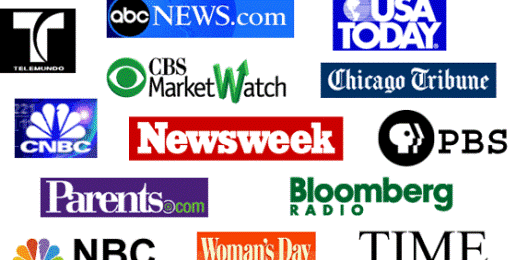
IFI Media Watch
You probably haven’t noticed it. It is subtle, yet powerful. It’s a tool that changes the way Americans process the news they receive via television, print and radio. What am I talking about? The style book. Ever heard of it? Every newspaper and magazine has one; every journalist practically knows what it says by heart and, subsequently, it is akin to a politically correct language guide for the establishment press.
If you haven’t heard of the style book before now, don’t feel bad. I wasn’t aware such a thing existed until a few years ago when I wrote a column about how the Chicago Tribune changed the word pro-life to anti-abortion every time a pro-life leader used the word in a published letter to the editor. I requested and received a quote from a Tribune editorial page editor who acknowledged the existence of this bible of political correctness.
Do you ever wonder why we never hear the words pro-abortion in the mainstream media’s coverage of right to life issues? The word pro-abortion is not in the style book. It’s taboo. It’s a big no-no. The style book says to use the word pro-choice. Why would the establishment press prefer to use the term pro-choice over pro-abortion? Even I can answer that question. It sounds much cleaner, much neater. Heck, we’re all pro-choice. We make lots of choices during the day. We choose if we will talk a walk or have a high calorie dessert when we’re supposed to be on a diet. But still, choice is a nice word.
In contrast, the word pro-abortion is not in the dominant media’s style book. Listen closely. You’ll never hear it. You’ll never read it. The word has been scrubbed from the journalistic lexicon.
The style book has been used in many ways to impact thought. Take the word gay. According to my very old Webster’s Dictionary, gay is defined as:
1. joyous and lively; merry; happy; lighthearted
2. bright; brilliant [gay colors]
3. given to social life and pleasures [a gay life]
4. wanton; licentious [a gay dog]
5. [Slang] homosexual
Today, the word gay is no longer slang for homosexual, it’s synonymous with homosexuality. Gay no longer means happy. It’s not called a Homosexual Pride Parade, it’s a Gay Pride Parade. It’s not homosexuals in the military, it’s gays in the military. Why? Because the term gay is meant to take our mind off of the subject, the meaning behind homosexuality and the act itself. The word gay is definitely in the p.c. style book and it’s there for a purpose.
Do you want another example? Well, whether you want one or not, here it is. Have you ever heard the term “undocumented worker”? You probably have, but this is where the style book has run into trouble. Most Americans know the difference between what an undocumented worker is and an illegal alien or illegal immigrant. In this case, Americans have refused to buy into the politically correct language used by the dominant media to refer to this group. Again, the term undocumented worker sounds much better and much less offensive to Americans than illegal immigrants.
Now don’t bother to call the Chicago Sun-Times, Springfield State Journal Register, the Daily Herald, Bloomington Pantagraph or any of the numerous newspapers throughout Illinois to try to obtain a copy of their style book. They probably will tell you the style book doesn’t exist. But trust me, there is one.
The Chicago Tribune editor told me, in using the style book, they are “strictly trying to be consistent with all sections of the paper, and to be as fair and accurate as we possibly can.” But what’s fair and what’s accurate and to whom?
The style book is a vital tool for liberals in the press which they hope will help change the way you think about contentious issues of the day and to a large extent they have been successful. Is it sinister? Well, I guess it depends on how it’s used and who is using it. Now all members of the mainstream media cannot be painted with a broad brush of condemnation. In many cases, the “bad guys” are the editors who enforce the use of the style book on their journalists.
So, the next time you’re watching ABC, CBS or NBC, or reading a newspaper, or listening to some radio stations, pay close attention to their language when they discuss some of these issues. Some say what they are doing is censorship. Personally, I think it is censorship, but I’ll leave that conclusion up to you. No style book here.






















